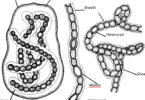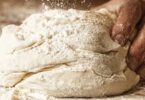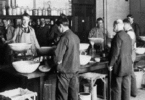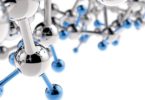Blood Pressure quiz for students
Which of the following factors can contribute to high blood pressure?
(a) Regular physical activity
(b) Low sodium intake
(c) Obesity
(d) Adequate sleep
What is the purpose of the cuff in a blood pressure monitor?
(a) It holds the monitor in place during measurements.
(b) It provides comfort to the user during the measurement process.
(c) It helps to detect and record blood pressure readings accurately.
What is given in low blood pressure ?
(a) Dextrose drip
(b) Saline drip
(c) Tetracycline
(d) Distilled water
What is the normal range for a healthy adult’s blood pressure?
(a) 60/40 mmHg
(b) 120/80 mmHg
(c) 160/100 mmHg
(d) 200/120 mmHg
Related: Fiber Optic Communication System Quiz
What does the top number in a blood pressure reading represent?
(a) Diastolic pressure
(b) Systolic pressure
(c) Pulse rate
(d) Body temperature
Which type of blood pressure monitor is commonly used at home and wraps around the upper arm?
(a) Digital wrist blood pressure monitor
(b) Mercury sphygmomanometer
(c) Finger blood pressure monitor
(d) Upper arm blood pressure monitor
According to the blood pressure chart, which category represents prehypertension?
(a) Systolic: 110-119 mmHg / Diastolic: 70-79 mmHg
(b) Systolic: 120-129 mmHg / Diastolic: 80-89 mmHg
(c) Systolic: 130-139 mmHg / Diastolic: 90-99 mmHg
(d) Systolic: 140-149 mmHg / Diastolic: 100-109 mmHg
Which body system is often affected by low blood pressure?
(a) Digestive system
(b) Respiratory system
(c) Muscular system
(d) Cardiovascular system
Which feature in a blood pressure monitor can store and track multiple blood pressure readings over time?
(a) Bluetooth connectivity
(b) Irregular heartbeat detection
(c) Hypertension indicator
(d) Memory function
What does systolic blood pressure represent?
(a) The pressure in the arteries when the heart is at rest.
(b) The pressure in the arteries during the heart’s contraction.
(c) The average pressure in the arteries over a 24-hour period.
(d) The pressure in the veins returning blood to the heart.
What symptoms might be experienced when blood pressure drops suddenly upon standing up?
(a) Fatigue
(b) Chest pain
(c) Fainting or lightheadedness
(d) Increased appetite
Which of the following factors can contribute to an increase in systolic blood pressure?
(a) Regular physical exercise
(b) Reduced stress levels
(c) Ageing
(d) Adequate hydration
Increase in the blood pressure is caused by the hormones
(a) Adrenalin
(b) Thyroxine
(c) Secretin
(d) Gastrin
Which lifestyle factor is strongly associated with the development of high blood pressure?
(a) Regular exercise
(b) Balanced diet
(c) Adequate sleep
(d) Sedentary lifestyle
Which dietary component can contribute to elevated blood pressure levels?
(a) Fruits and vegetables
(b) Whole grains
(c) Sodium (salt)
(d) Unsaturated fats
Which of the following is a common symptom of low blood pressure?
(a) Headaches
(b) Rapid heart rate
(c) Flushed skin
(d) Dizziness
Related: Quiz on Study of Histology
Which of the following statements about blood pressure and age is true?
(a) Blood pressure remains constant throughout a person’s life.
(b) Blood pressure generally decreases with age.
(c) Blood pressure typically increases with age.
(d) Blood pressure is not affected by age.
An increase in blood pressure is caused by all the following except
(a) Adrenalin
(b) Angiotensin
(c) Stimulation of parasympathetic nerves
(d) Stimulation of vagus nerve
What is the reason for the age-related increase in blood pressure?
(a) Weakening of blood vessel walls
(b) Decreased heart rate
(c) Improved cardiovascular fitness
(d) Reduction in blood volume






